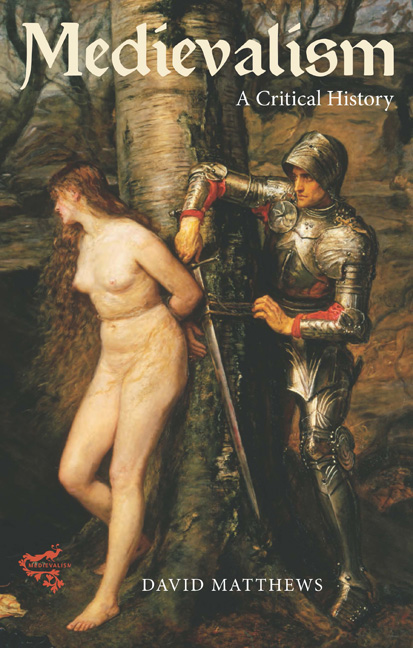Book contents
- Frontmatter
- Dedication
- Contents
- List of Illustrations
- Preface
- Acknowledgements
- Abbreviations
- Introduction
- I TAXONOMIES
- II TIME, SPACE, SELF, SOCIETY
- III HISTORY AND DISCIPLINE
- 5 Wemmick's Castle: The Limits of Medievalism
- 6 Realism in the Crypt: The Reach of Medievalism
- Conclusion Against a Synthesis: Medievalism, Cultural Studies, and Antidisciplinarity
- Afterword
- Appendix I The Survey of Reenactors
- Appendix II Key Moments in Medievalism
- Bibliography
- Index
5 - Wemmick's Castle: The Limits of Medievalism
from III - HISTORY AND DISCIPLINE
- Frontmatter
- Dedication
- Contents
- List of Illustrations
- Preface
- Acknowledgements
- Abbreviations
- Introduction
- I TAXONOMIES
- II TIME, SPACE, SELF, SOCIETY
- III HISTORY AND DISCIPLINE
- 5 Wemmick's Castle: The Limits of Medievalism
- 6 Realism in the Crypt: The Reach of Medievalism
- Conclusion Against a Synthesis: Medievalism, Cultural Studies, and Antidisciplinarity
- Afterword
- Appendix I The Survey of Reenactors
- Appendix II Key Moments in Medievalism
- Bibliography
- Index
Summary
In the first two parts of this book, I have made various claims about the reach and impact of medievalism in a range of contexts, with a particular focus on the British. I have discussed the way in which medievalism can be traced back to the immediate post-medieval period itself, as a product of the invention of the Middle Ages in the sixteenth century. Its major phase in Europe is inextricably associated with the Medieval Revival that began after the middle of the eighteenth century. In Germany, for example, at the height of the Enlightenment with its neoclassical impulses, a fresh interest in medievalism was a vital force behind romanticism. In France, the work of the medievalist Jean-Baptiste de La Curne de Sainte-Palaye introduced a strand of medieval studies in the time of the eighteenth-century philosophes; in turn, romanticism became the most dynamic literary movement in Britain of the late eighteenth century and the early nineteenth. As a result, cultural medievalism became a powerful emergent force in the late eighteenth century, alongside the dominant neoclassicism.
In Britain, romanticism was a transforming force in literature. While literary medievalism in Britain waned with the fading of the gothic novel in the 1820s and the deaths of most of the major Romantic poets, medievalism then shifted into new cultural realms, becoming particularly dominant, for example, in architecture from the 1840s and making a significant mark in the visual arts in the second half of the century. Britain led in gothic revivalism but it was taken up in France with the establishment of the Commission des Monuments Historiques in 1837 and also became a force in post-Napoleonic Germany, taking root across Europe more generally in the second half of the nineteenth century. In addition, Britain's colonies – especially India and Australia – were strongly marked by neo-gothic architecture while America, though it had shaken off colonialism, adopted neogothic anyway.
As I have suggested, the entry into the English language of the adjective and noun “medieval” and “medievalism,” in about 1817 and 1844 respectively, marked different phases in the understanding of the Middle Ages.
- Type
- Chapter
- Information
- MedievalismA Critical History, pp. 117 - 139Publisher: Boydell & BrewerPrint publication year: 2015



